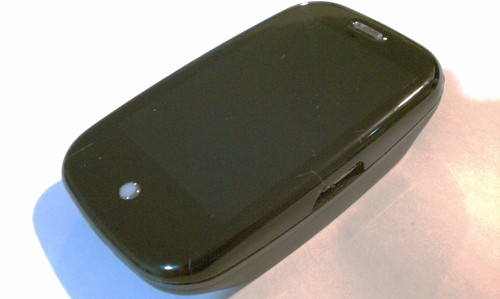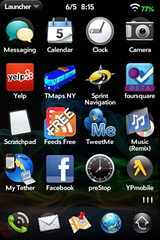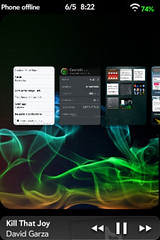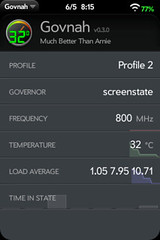I’ve flown a fair amount over the past few years, through many airports in the US and abroad. The International Terminal at SFO was one of the first places I regularly fly through (Virgin America’s HQ/hub) that had “Advanced Imaging Technology” aka the porno-scanner installed. Still, with the ability to choose your line (and looking on with some morbid fascination that people didn’t realize what they were exposing and being exposed to), I was able to for the most part, avoid this particular security theater for quite a while. It wasn’t until this spring that I was finally confronted with having to opt out – which I did.
Like many others (and a couple friends it turned out), I experienced first hand TSA’s efforts to berate and attempt to humiliate me, which seemed like SOP to cow myself and others into not opting-out. This, btw, included repeating the lie that this wasn’t an abrogation of the 4th amendment (which apparently some people fought about a while back and started some country or something), and that I had no right to fly. As pointed out in a recent thread, this is patently not the case either in law (“A citizen of the United States has a public right of transit through the navigable airspace”) or in case law (Kent v. Dulles (1958) – “The right to travel is a part of the ‘liberty’ of which a citizen cannot be deprived without due process of law under the Fifth Amendment”). This was pre “enhanced pat-down” aka groping of the genitals (FYI, the San Mateo DA has promised to prosecute inappropriate pat-downs as sexual assault). In any case after an exchange with @TSABlogTeam that about my treatment, I filed an official complaint online, which obviously had no effect whatsoever.
It’s somewhat of a relief to see this finally get some mainstream attention, and for people to really start thinking about what a decade of the TSA and it’s accompanying security theater really means. In my view, even leaving out the basic civil rights issues, on the issue of basic competence and effectiveness, there has been a serious lack of overall seriousness in actual security – professionalism and training of agents is severely lacking and uneven, and the (completely arbitrary, ever-changing, secret, and again, unevenly applied) rules are mostly hare-brained and don’t pass basic common-sense sniff tests (much less any formal analysis of effectiveness, or real security/threat modeling).
At this point, a decade in, the TSA is a complete failure. It has no credibility, even as security theater. If it were up to me, the only way that the TSA would be allowed to continue is that, as suggested on this recent GovLoop thread, that a serious government or independent panel were to publish cost/benefit and full risk analysis studies of their procedures. Beyond that, public accountability in the form of published results for regular pen-testing/other basic quality assurance procedures to make sure that guidelines were being followed and that citizens are treated, well, as citizens would be another requirement. The TSA as it stands, both as an institution and as an organization betrays the principles and basic laws that the US was founded on, paid for in blood by our predecessors.
That being said, my hopes are dim for any real reform to happen. It’s probably best summed up in this comment from that same GovLoop thread. (This comment is what finally got me to sit down and write down some of my thoughts on the matter):
6. We are not talking inconvenience. We are talking abrogation of fundamental 4th amendment rights and the reduction of our society to a thinly vieled police state. The most shameful aspect of the entire situation is that we allow TSA and other law enforcement agencies to slowly and steadliy chip away at our freedoms because we are too scared or compliant to resist. I fly about 2-4 times a year, usually for vacations and will continue to do so. I have and will continue to stand in the machine and allow TSA work their will because I am more interested in getting on with my trip than in standing up for my rights. I am ashamed of this fact and bitterly resent TSA for forcing me to realize that in at least one sense, I am a moral coward. I strongly suspect that a large part of the backlash currently directed at TSA comes from people who share my views, share my moral cowardice, are equally ashamed of it and are looking for ways to resist without ending up on a no fly list.
In all likelyhood TSA will “win” this fight. Our rights will degrade a little more each year and few if any of us will ever offer any meaningful resistance. It is a sad commentary on our nation and our culture that we have allowed and will continue to allow law enforcement (not just TSA) do erode our basic values and do more harm to our nation than any terrorist could hope to accomplish in their wildest dreams.
For the first time in years, I don’t have any flight plans lined up. It’s a good opportunity for me to think long and hard about what the correct moral stand is.
- Fly With Dignity (see OperationGrabAss)
- National Opt Out Day
- TSA Blog threads on Image Saving (sorry, just not credible), Enhanced Pat Downs
- Since the TSA molested my family, why doesn’t Obama volunteer to subject his family to the same security procedures?
- Samuel Liles’ post on how security *should* be done – the best I’ve seen recently (ah, a researcher in cyber warfare; that explain explains actually thinking rationally about risk and security)
- Schneier on Security: TSA Backscatter X-ray Backlash – Schneier has a fairly good collection of links/news
- TSA Enhanced Pat Downs : The Screeners Point Of View – “Of the 20 I reached out to, 17 responded… … all 17 mentioned their morale being broken down.”
- Why the TSA pat-downs and body scans are unconstitutional



